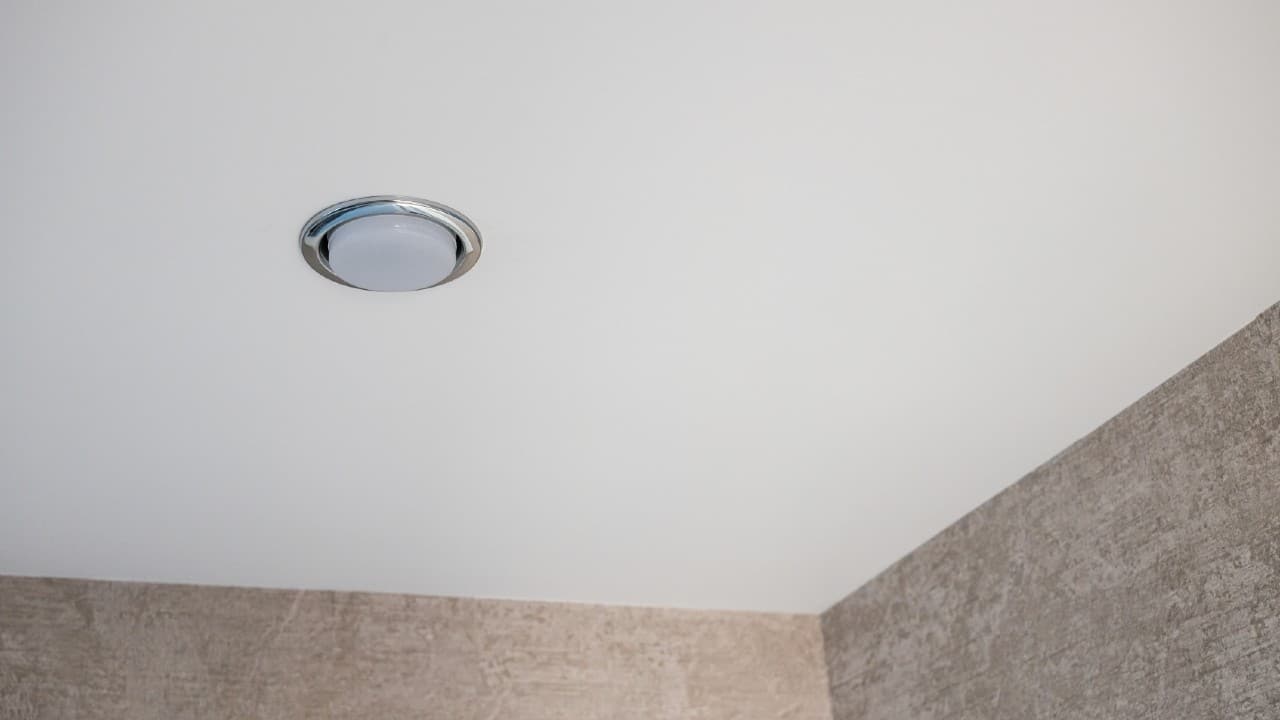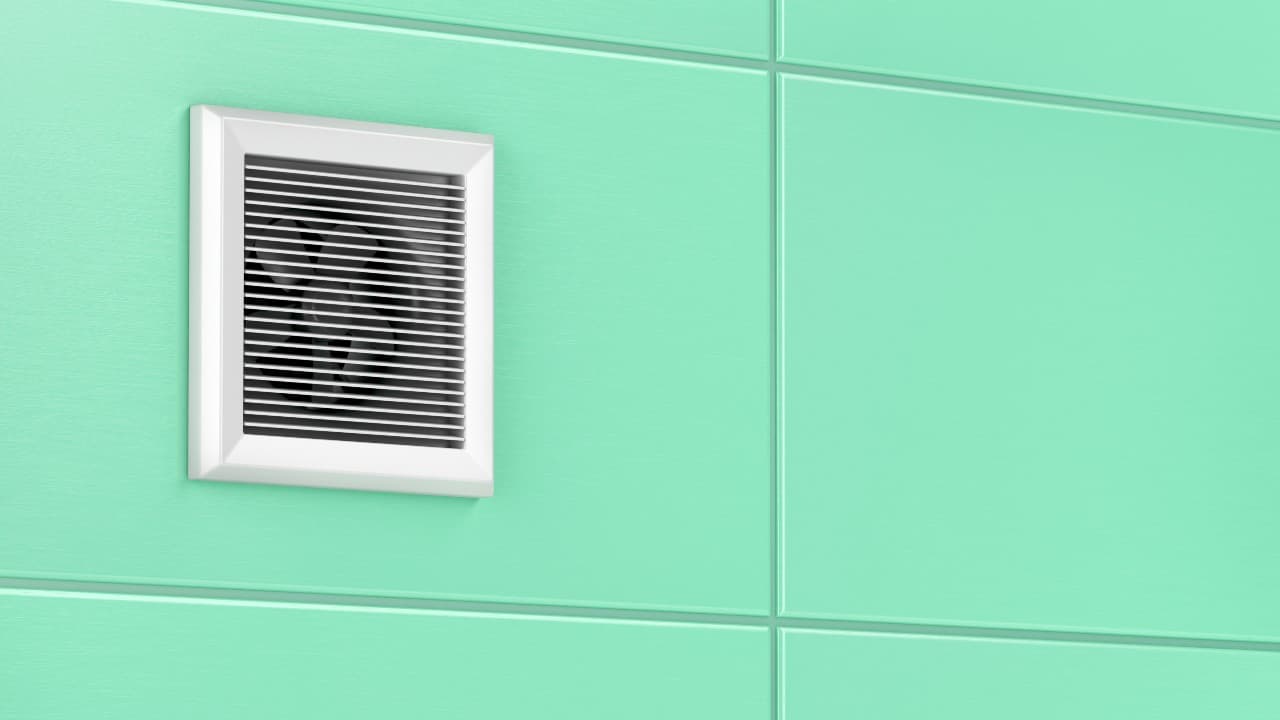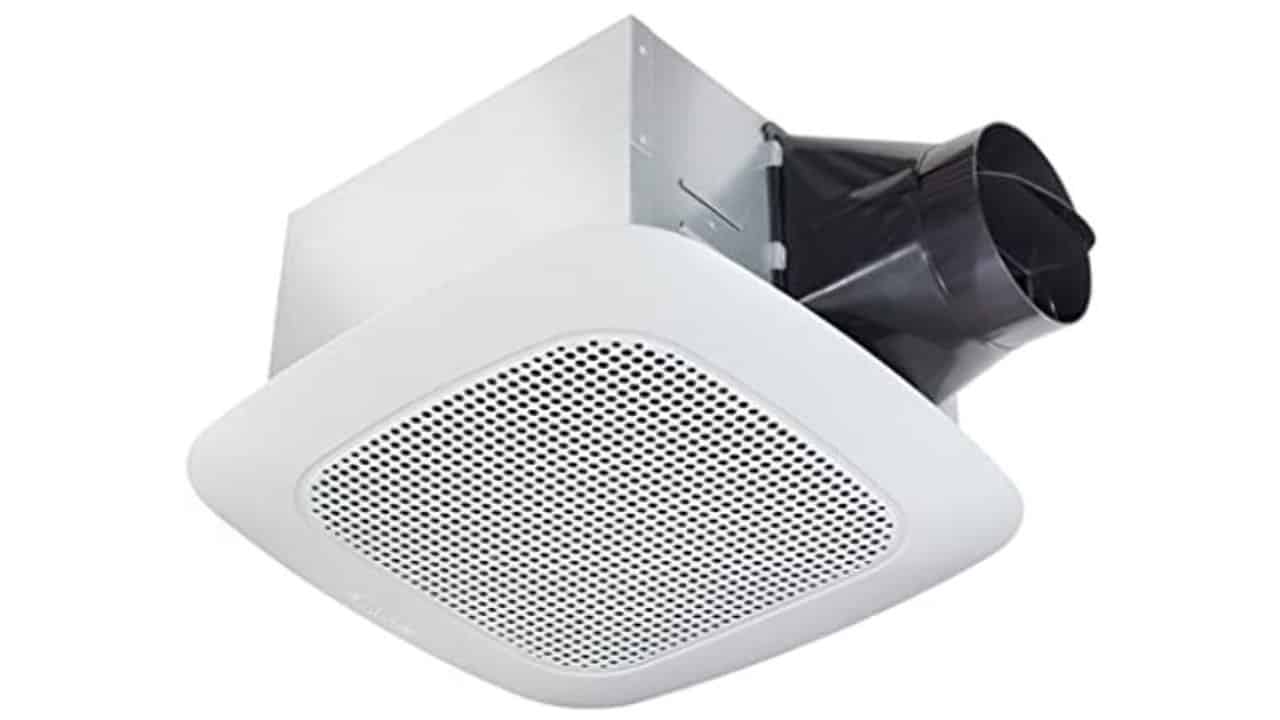Bathroom fans are most commonly vented to the sidewall or through the roof. These two options are viable and valid.
But, sometimes, you will run into a place where the moist bathroom air is excavated to the attic. This is an outdated practice that most builders and homeowners nowadays avoid.
A humid attic brings about mold, which causes wood and other materials to rot and ruin the house’s structural integrity.
At the same time, a moldy home can cause a plethora of health-related issues to its residents. Due to all these reasons, venting your bathroom fan into the attic is an option you should avoid.
Stuck somewhere in the middle, we have the option of connecting your bathroom vent to the soffit of your home.
If you are curious about venting a bathroom fan through a soffit, know that this is usually not the ideal option. However, there are instances when this is the best thing that you can do. Keep reading to find out when and how to vent a bathroom fan through soffit.
Contents
What Is a Soffit and How Does It Work?
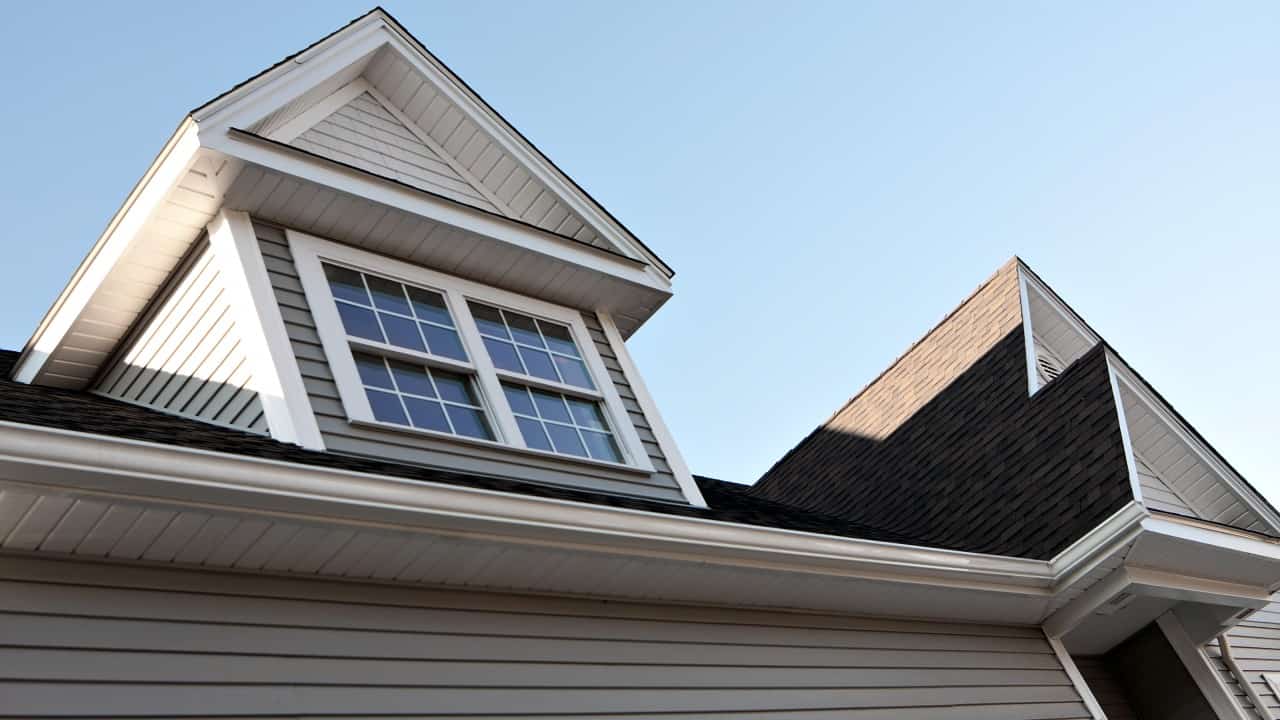
Soffit is placed on the overhangs of your roof. The underside of this overhang has several names – some call them house eaves while others say rafters. Both sides agree that the name for the bottom with a completed appearance is “soffit,” or “a thing that hangs under.”
A soffit can be of almost any finishing material, such as wood or fiber cement. What matters more than the material used is its function – a soffit covers the bottom side of your roof overhang.
The main reason to have a soffit of some kind set up on your roof is for ventilation purposes. Since a soffit would be covering the side underneath your roof, it would become a part of your loft space. As you must know by now, the attic is the warmest portion of your house.
This is because all the hot air from inside your home gets trapped in the attic. At the same time, your attic becomes increasingly warm thanks to the sun beaming down on it and creating the hottest spot in your house.
All this accumulated heat must have some way to get out. Without proper ventilation, you are at risk of roof shingles breaking more easily during the summer. In addition, the same heat can cause the creation of ice barriers during winter, which may cause water to leak.
Higher temperatures in your attic also mean an increase in energy bills when your AC is on during summer. A humid environment is also the main culprit for mold, mildew, and wood rot caused by increased humidity.
Soffits may be perforated or vented to help air circulate through your attic space and decrease the risk of all the unwanted things mentioned above. In addition, during the hot days of summer, soffits can help your home stay warmer while keeping it less humid during the colder days of winter.
Soffits also protect the underside of your roof and your deck from the elements. In addition, they can keep harmful moisture and pests such as insects away from your balcony.
Finally, a nice-looking soffit adds a vital aesthetic component to the overall look of your home. If you are only now installing soffits, pick a material and color that nicely compliments the rest of the exterior of your home and gives it a polished and unique look. We also have a post on how bathroom fans work.
Some Advantages of Venting a Bathroom Fan Through a Soffit
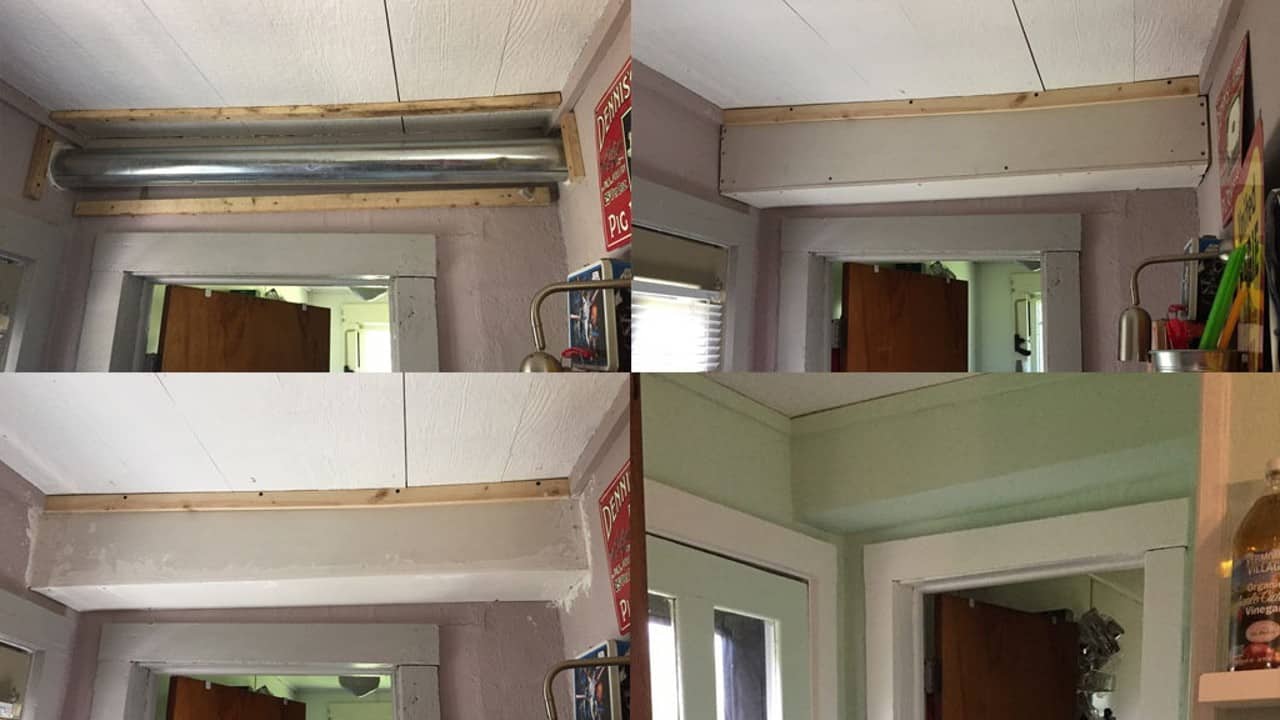
Photo by Aaron Headly via Wikimedia Commons (CC BY-SA 4.0)
If you live in an area with plenty of rain and snow, you might consider this option. A hole in the roof of your home might lead to leaks and other problems.
Sometimes, connecting your second-floor bathroom to the outside wall can be more trouble than it is worth. That is when venting a bathroom fan through the soffit is your best option.
This option is also attractive because of the shortest possible duct length without too many bends.
By venting to the soffit, you also avoid the risk of back-drafting. If you mount a fan vertically on your bathroom wall, it will have to work overtime as it will have to fight against winds coming in from outside. Back-drafting can even suck back inside the humid air you are trying to expel and make your fan work even harder.
By venting your bathroom through a soffit, you are also preserving the integrity of your roof. This can be crucial if your house is old and your roof is not in perfect shape.
Finally, this type of ventilation can be beneficial for room heat preservation. When your bathroom fan is turned off, all the air will stay suspended in the ducts and act as a heat trap. As a result, it will prevent cold air from entering your home. This is particularly useful in colder climates.
What Is the Soffit Exhaust Vent Cover?
The soffit cover does the same thing as its wall-mounted counterpart does. Namely, it is tasked with keeping the outside air outdoors, where it belongs. It can also keep out moisture and small animals such as birds and even prevent them from building nests that can significantly obstruct the airflow.
Modern soffit exhaust covers are spring-loaded, so they automatically snap shut once your bathroom fan is off. Some have a fixed duct size, while others are adjustable to fit both four and six inches wide duct vents.
Check the package carefully and make a note of these measures before you start working.
Installing a Soffit Exhaust Vent – Do’s and Don’ts
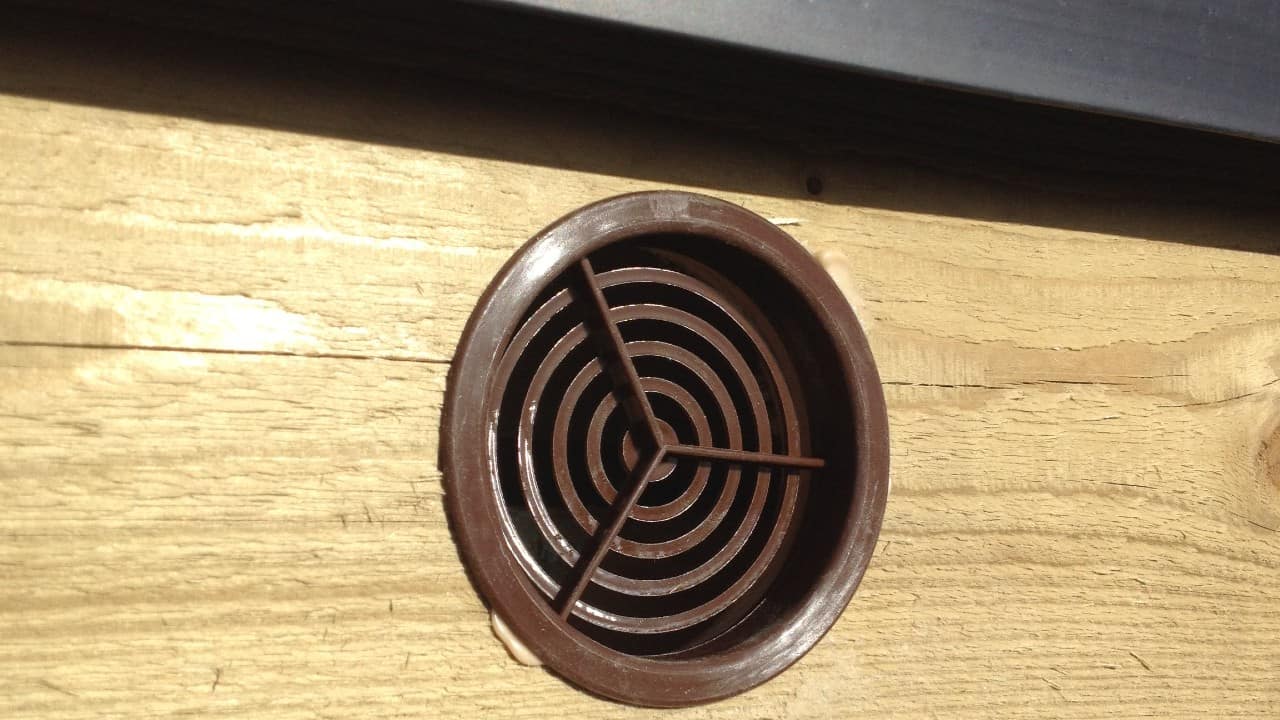
Photo by Ben Freeman via Flickr (CC BY-NC 2.0)
Venting your bathroom through a soffit can be a doable DIY project. Here is what you should pay attention to.
Do not bend the hose when installing the soffit exhaust cover. In general, you want to have the smallest possible amount of bends and curves when installing your vent. Fewer curves mean smoother airflow and better ventilation while also reducing the risk of condensation and problems with moisture and mold.
Pick a vent hose that is of appropriate size – before you commit to installing the vent, make sure that you have done all the necessary measurements. Most importantly, measure the duct size of your bathroom fan.
Most older fans have a duct size of three inches or even smaller. Newer models are usually within the range of four to six inches. Choose the vent hose that matches your fan as well. For more information, check out this bathroom exhaust fan sizing chart.
Cutting the Soffit Hole
Once you have installed the soffit exhaust cover, with a significant obstruction soffit hole, with most covers, you will get a paper template that you can stick to the soffit and it will guide you when making the hole.
Grab a permanent marker and draw where you want the hole to be. Next, choose a spot that is in the right area – between the roof rafters. Finally, grab a saw and start cutting the hole. For this job, you will need a jigsaw or tic sips.
After that, it is time to place the vent hose there if you haven’t already done so.
Final Steps
In the end, all you have to do is pull the hose through the hole that you have just made. Pull it straight out and make sure that you have about one foot extra to work with.
Once this part of the job is complete, now is the time to ensure that the vent hose is as straight as possible. Cut off any extra hose to reduce the risk of the material crumbling and causing condensation.
Next, use a metal clamp to connect the vent and soffit cover. Once the clamp is installed, you can cover it with foil tape to make it fit even better.
Insert the vent cover back into the soffit and use the supplied screws to mount the cover to it. Congrats, you have successfully completed this project!
Some Extra Advice
If you are already going through all the trouble of installing a bathroom fan through a soffit consider going the extra mile and investing in an insulated vent hose.
This is especially important if your attic is not finished or not adequately insulated. Insulated ducts are wrapped in fiberglass insulation, and some of them even come with a vapor barrier. Having those set up can significantly reduce the chances of mold and condensation forming on your vents and causing problems elsewhere in your home.
Takeaway
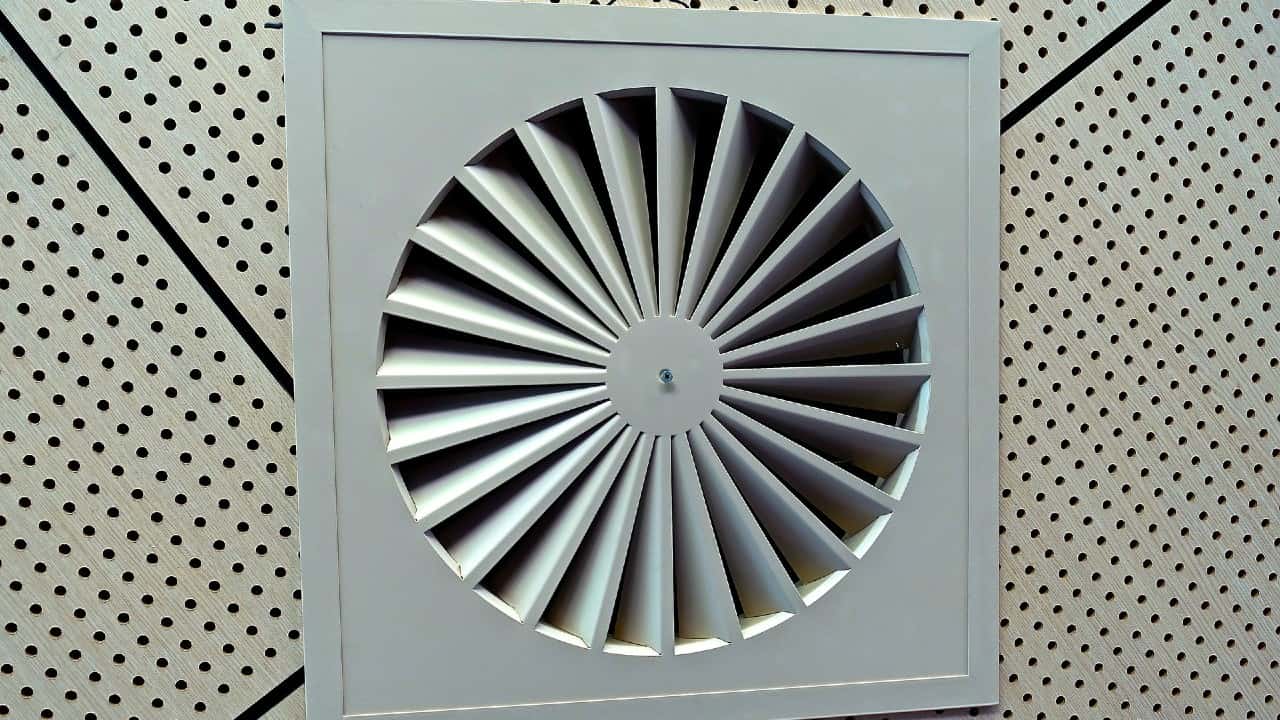
While a soffit exhaust vent installation is not the ideal way to do it, there are some instances where this is the only feasible option.
For example, if you have an old and fragile roof that you don’t want to poke holes in or if you have a second-store bathroom that cannot be easily connected to your ceiling or an exterior wall.
Also, this is the preferred method for the areas with heavy snow, as severe snowfall can block the vents on the roof and make the entire venting system useless.
As for tools, you will need a tall ladder and a jigsaw. Everything else should come with the fan – a vent hose and a clap plus a vent cover.
Remember that soffits are designed for air intake, so there is a slim chance of the air being sucked back into the attic. However, even though installing an exhaust bathroom fan can disrupt the airflow through the soffit, it is a comparatively small area, so it shouldn’t be a huge problem.
If you make a mistake during the installation, it can cause hot air to accumulate under the soffit and cause more severe issues. As long as both the bathroom fan and the duct are appropriately connected and well insulated, you should be fine. Make sure to check out our post on the best bathroom exhaust fans as well.
